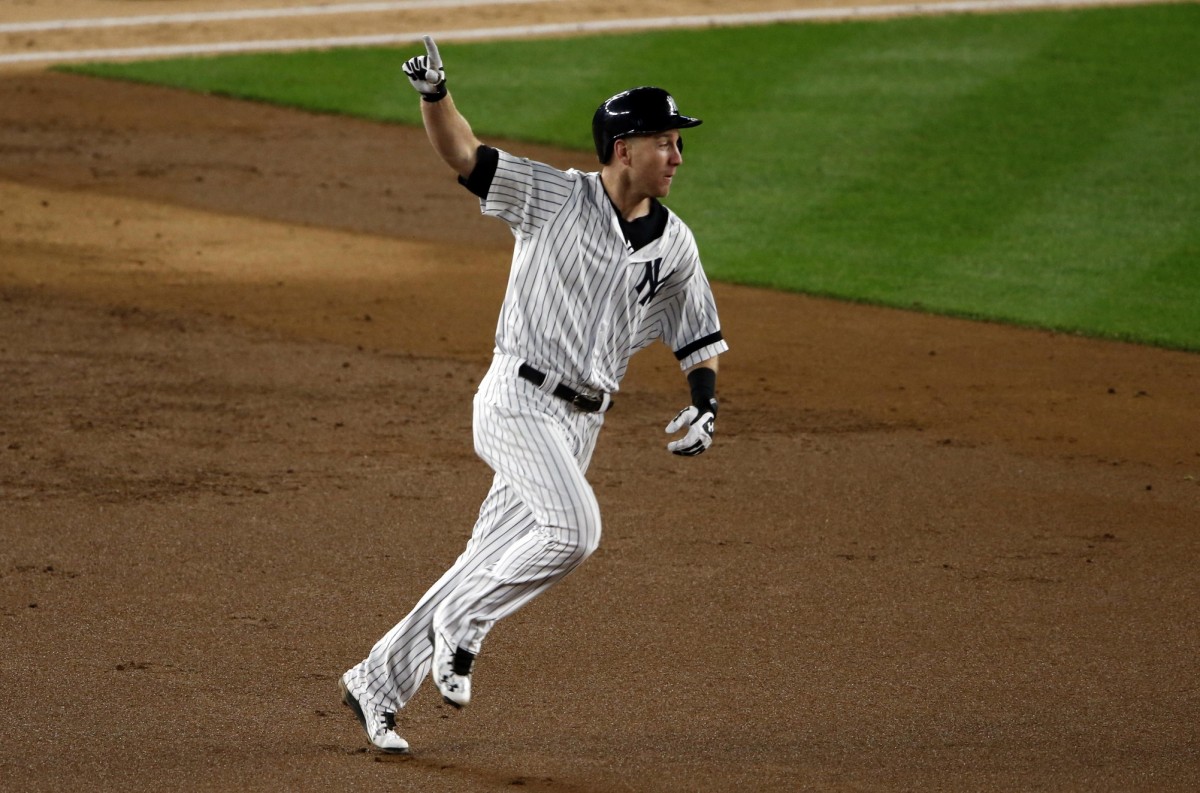The Cleveland Indians, Los Angeles Dodgers, and Houston Astros were arguably the best three teams in baseball last year. All three, understandably, had a lot of good qualities: deep lineups, strong pitching staffs, solid bullpens, etc. All three are also among the most forward-thinking, analytics-inclined teams in baseball, and built their rosters with unique features.
Specifically, all three teams built their rosters with multiple players at most positions. The Dodgers played Chris Taylor and Logan Forsythe all over, the Astros had Alex Bregman and Marwin Gonzalez, and the Indians had Jose Ramirez and Jason Kipnis. Most teams do not do this, but flexible roster construction allowed all three teams to avoid having to give tons of playing time to inferior hitters.
The typical modern AL roster includes eight starters position players, one semi-regular DH and four bench players:
- Eight starters
- One DH
- Backup catcher
- Backup infielder
- Backup outfielder
- Flexible (often a platoon 1st base, corner OF type)
The 2017 Yankee roster followed this construction for the most part, when everyone was healthy:
- Eight starters
- Matt Holliday (first half), flex (second half)
- Austin Romine (C)
- Ronald Torreyes (SS/2B/3B)
- Hicks/Ellsbury/C. Frazier (OF)
- Cooper/T. Frazier/Headley/Austin/etc. (1B/3B/DH)
There is an obvious weakness here: Ronald Torreyes. Torreyes’ biggest (or only?) asset is that he can play any infield position reasonably well. With a four-man bench, that becomes incredibly important, as your shortstop, second baseman, or third baseman needs a day off occasionally, and there is no room for someone to cover only one or two of those positions. Of course, shortstop and second base, in particular, are tough positions to play, and it’s difficult to find someone who can both hit and backup both positions. He hit okay for someone in this role–.292/.314/.375–but the Yankees could have given his 336 plate appearances to a much better hitter.
Enter Gleyber Torres, the number one Yankee prospect and a top-5 prospect in all of baseball. Had Torres not blown out his non-throwing elbow sliding into second base, there is little doubt that he would have made his major league debut in the second half last year. He was in the middle of a breakout age-20 season between Double-A and Triple-A, hitting .287/.383/.480. He’s played a decent shortstop for most of his minor league career, but the Yankees were also playing him at 2nd and 3rd base in preparation for a promotion to a team with an incumbent shortstop.
The Yankees should take advantage of Torres’ positional flexibility and strong hitting skills and not carry a true backup infielder. Torres should play nearly every day but at different positions. I imagine a planned breakdown along the lines of:
- Shortstop: Gregorius (90%) Torres (10%)
- Second Base: Castro (80%) Torres (20%)
- Third Base: Torres (60%) Headley/T. Frazier (40%)
- First Base: Bird (90%), Headley/ T. Frazier (10%)
- Designated Hitter: T. Frazier (50%), Outfielders (50%)
Obviously, there could be some change at third base or DH. Chase Headley could be traded, Todd Frazier could sign elsewhere, etc. The only important feature of this outline is that the Yankees need someone other than Torres to play third. Todd Frazier works well here as a DH/other, but you could also imagine someone like Miguel Andujar filling the time as well, or another free agent.
I may some important assumptions here that may not be true. First, Torres has to be sufficiently ready for the majors in April. The Yankees will want to delay his free agent clock by waiting a few weeks to call him up, but other than that he should be ready to go. Second, Torres can play 2nd/3rd/shortstop pretty well. Third, Torres will hit significantly better than Ronald Torreyes. I think that is a fine assumption, but may be contingent somewhat on #1.
The bottom line: Gleyber Torres can be our Chris Taylor/Jose Ramirez/Marwin Gonzalez/etc. The Yankee roster gets more resilient to injury, flexible at the trade deadline, and does not give away tons of at-bats to a replacement-level shortstop. All it takes is a leap of faith on the team’s top prospect.
Photo Credit: Adam Hunger / USA TODAY Sports
